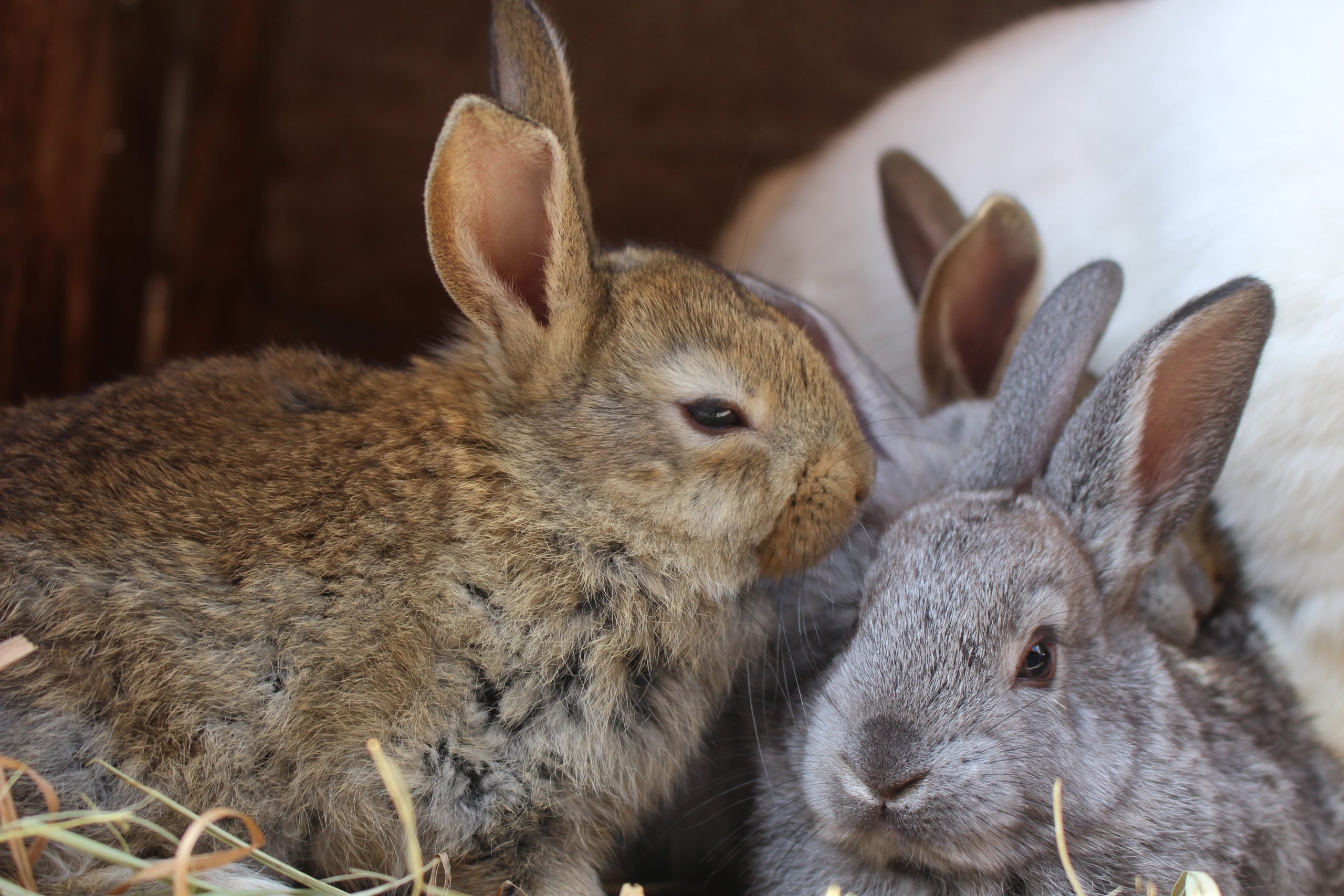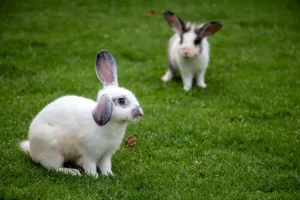Do you ever find yourself wondering if your adorable pet rabbit is a boy or a girl? Don’t worry, we’ve got you covered!
In this article, we will guide you through the process of determining your rabbit’s gender, so you can better understand and care for your furry friend.
From physical characteristics to behavioral differences, we will provide you with all the information you need to confidently identify your rabbit’s gender.
Let’s dive in and unravel the mystery together!
In This Article
- 1 Key Takeaways
- 2 Physical Characteristics of Male Rabbits
- 3 Physical Characteristics of Female Rabbits
- 4 Behavioral Differences Between Male and Female Rabbits
- 5 How to Determine Rabbit Gender Based on Genitalia
- 6 Identifying Gender Through Reproductive System Examination
- 7 Tips for Identifying Gender in Young or Baby Rabbits
- 8 Common Mistakes to Avoid When Determining Rabbit Gender
- 9 Frequently Asked Questions
- 10 Conclusion
Key Takeaways
- Male rabbits have a more robust physique, larger testicles, and a larger and more muscular body.
- Female rabbits have a smaller and more slender build, shorter legs, and a variety of coat colors and patterns.
- Observing coat color and texture can help determine the gender.
- Male rabbits tend to be more dominant and assertive, displaying dominant behaviors such as mounting or chasing other rabbits.
Physical Characteristics of Male Rabbits
You can easily identify male rabbits by their muscular build and prominent testicles. Male rabbits tend to have a more robust physique compared to females. Their bodies are generally larger and more muscular, which is especially noticeable around the shoulders and hindquarters.
Additionally, male rabbits have much larger testicles, located between their hind legs. The size and shape of their genitalia are distinct from those of females, making it easy to differentiate between the two genders.
When it comes to fur coloration, there are no significant differences between male and female rabbits. Both genders can have a variety of colors and patterns, depending on the breed. However, it’s important to note that individual rabbits may have unique variations in their fur coloration, which can differ regardless of gender.
Physical Characteristics of Female Rabbits
Looking at the physical characteristics of female rabbits, you’ll notice their smaller size and more slender build compared to males. Female rabbits typically have a more compact body shape, with shorter legs and a rounder appearance. They’re generally lighter in weight and have a more delicate structure overall.
When it comes to coat color and patterns, female rabbits can vary just as much as males. They can have solid colors, such as white, black, brown, or gray, or they can have a combination of colors and patterns. Some may have spots, stripes, or even a unique mix of colors.
It’s important to remember that while these differences exist, each individual rabbit is unique and may not fit into these generalizations precisely.
Behavioral Differences Between Male and Female Rabbits
Male rabbits typically exhibit more territorial behavior than their female counterparts, often marking their territory with urine and displaying aggressive tendencies towards other rabbits. Understanding the behavioral differences between male and female rabbits is crucial for creating a harmonious environment for these social animals. Here are three key points to consider:
- Social interactions:
- Male rabbits tend to be more dominant and assertive in social situations.
- They may display dominant behaviors such as mounting or chasing other rabbits.
- Females, on the other hand, are typically more social and enjoy grooming and bonding with their fellow rabbits.
- Mating behavior:
- Male rabbits are known for their tendency to be more sexually active and persistent in pursuing potential mates.
- They may engage in mounting behavior and exhibit vocalizations to attract females.
- Females, on the other hand, may display receptiveness through ear movements and body language.
- Aggression:
- As mentioned earlier, male rabbits can be more territorial and aggressive towards other rabbits, especially when defending their territory or competing for mates.
- This aggression can manifest in chasing, biting, or lunging behaviors.
- Female rabbits, while generally less aggressive, may still display territorial behavior, but to a lesser extent.
Understanding these behavioral differences can help rabbit owners provide appropriate socialization opportunities and manage any potential conflicts in a rabbit group or pair.
How to Determine Rabbit Gender Based on Genitalia
If you’re unsure of a rabbit’s gender, a simple way to determine it is by looking closely at its genitalia and using the information provided in this guide. By observing the external appearance of a rabbit’s reproductive organs, you can easily identify whether it is male or female. Here is a helpful guide to assist you in determining a rabbit’s gender through external appearance:
| Male Rabbits | Female Rabbits |
|---|---|
| Testicles located near the anus | No visible testicles |
| Penis protrudes from the genital opening | No visible penis |
| Urogenital opening is circular | Urogenital opening is vertical and slit-like |
It’s important to note that while determining gender through external appearance is a reliable method, genetic testing can also be used for accurate rabbit gender identification. Genetic testing involves analyzing the rabbit’s DNA to determine its chromosomal makeup. This method is especially useful when dealing with rabbits that have ambiguous or abnormal external genitalia. However, for most rabbits, visual inspection of the genitalia is sufficient for gender determination.
Identifying Gender Through Reproductive System Examination
Take a careful look at the reproductive system of the rabbit to accurately identify its gender. Identifying the gender of rabbits is crucial for several reasons. Here are three techniques to help you determine rabbit gender accurately:
- External genitalia: Male rabbits have a visible penis, which is located near the anus. Female rabbits, on the other hand, have a slit-like opening called the vulva.
- Testicles: Male rabbits possess testicles, which can be felt as two small round structures located in the scrotum. Female rabbits, on the contrary, don’t have testicles.
- Urogenital opening: Male rabbits have a circular urogenital opening located below the anus, while female rabbits have a slit-like urogenital opening.
Accurate rabbit gender identification is important for breeding purposes, ensuring appropriate housing, and preventing unwanted pregnancies. By understanding these techniques, you can confidently determine the gender of rabbits and provide them with the care they need.
Tips for Identifying Gender in Young or Baby Rabbits
You can easily determine the gender of young or baby rabbits by looking for distinguishing characteristics with the help of a magnifying glass. When it comes to growth patterns, male rabbits tend to be larger and have a more muscular build compared to females. They also tend to have a broader head and wider shoulders. On the other hand, female rabbits have a more slender and graceful appearance. Another way to identify the gender is by observing the coat color and texture. Male rabbits often have a denser and coarser coat, while females typically have a softer and smoother coat. Additionally, some male rabbits may display a color change on their chest or neck area during sexual maturity. By paying attention to these characteristics, you can confidently determine the gender of young or baby rabbits.
| Growth Patterns | Coat Color and Texture |
|---|---|
| Males are larger and have a more muscular build. | Males have a denser and coarser coat. |
| Females have a more slender and graceful appearance. | Females have a softer and smoother coat. |
| Males may display a color change on their chest or neck area during sexual maturity. |
Common Mistakes to Avoid When Determining Rabbit Gender
When determining rabbit gender, it’s important to be cautious about relying solely on external genitalia, as this can lead to common mistakes in identification. Here are three common misconceptions to avoid and the importance of correctly identifying rabbit gender:
- Size and shape of genitals: It’s a common misconception that male rabbits always have larger and more prominent genitalia than females. However, this isn’t always the case, as the size and shape of genitals can vary among individuals.
- Behavior and personality traits: Another misconception is that male rabbits are always more aggressive and territorial than females. While hormonal differences can influence behavior, it’s important to remember that individual personalities can vary greatly.
- Fur color and markings: Some people believe that certain fur colors or markings determine the gender of a rabbit. However, fur color has no correlation with gender, and relying on this can lead to misidentifications.
Correctly identifying rabbit gender is important for many reasons, including proper housing, breeding management, and healthcare. It ensures the well-being and overall health of rabbits, making it essential for those serving these furry companions.
Frequently Asked Questions
What Are Some Common Names for Male Rabbits?
Popular male rabbit names include Max, Charlie, Oliver, and Jasper. These names are commonly used and loved by rabbit owners. They are simple, easy to remember, and suit the adorable nature of rabbits.
Can Male Rabbits Be Spayed?
Yes, male rabbits can be neutered. This procedure is called castration and it is commonly done to control breeding and reduce aggression. The benefits include a decreased risk of certain diseases. However, there are some risks involved, so it’s important to consult with a veterinarian.
How Long Do Female Rabbits Stay Pregnant?
During a rabbit’s pregnancy, which typically lasts around 31 to 33 days, the female rabbit may show signs such as nesting behavior and weight gain. It’s important to monitor her health and provide the necessary care.
Do Rabbits Have a Specific Breeding Season?
Rabbits do have a specific breeding season, which can vary depending on factors such as climate and availability of food. The breeding season is influenced by the length of daylight and hormonal changes in the rabbits’ bodies.
Can You Determine a Rabbit’s Gender Just by Looking at Its Behavior?
Can you determine a rabbit’s gender just by looking at its behavior? While behavior can provide some clues, it is not a foolproof method. Factors such as physical characteristics and reproductive organs should also be considered for accurate gender identification.
Conclusion
Congratulations! You’re now equipped with the knowledge to confidently determine the gender of rabbits. Just remember, whether it’s by observing physical characteristics, behavioral differences, or examining the reproductive system, accuracy is key.
So hop to it and discover the gender of your fluffy friends with ease. Remember, don’t let gender be a hare-y mystery anymore, unravel it like a magician revealing their greatest trick!





